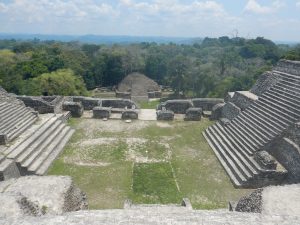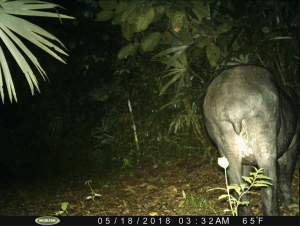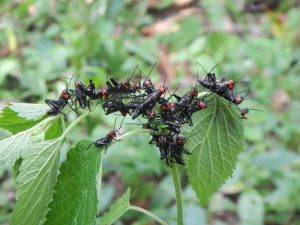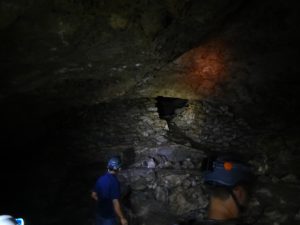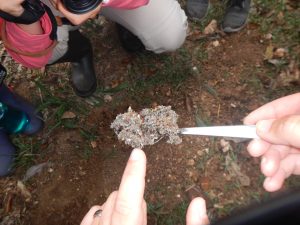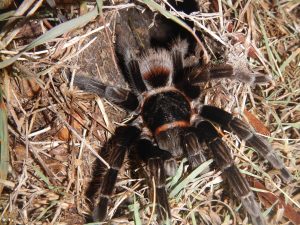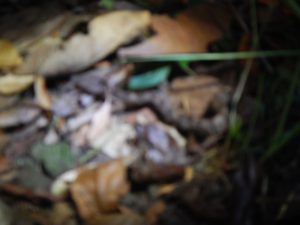Day 2: May 16th 2018, From the Ecolodge to Las Cuevas Research Station
Today we woke up around 5:00 am in the Crystal Paradise Ecolodge, had a fantastic breakfast, and were on our way to our first stop by 7am. Our first stop was series of pools and small waterfalls called Rio on Pool. The pools were cool and the rocks were mossy as we slipped and slid all over the rocks as we explored the areas. There appeared to be little in the water at first glance, but after being there for a while, we saw small fish, spiders, a few leaches, and an insect exoskeleton. After drying off, I spotted two lizards. One was about a foot with a distant green stipe down the middle while the other was brown and a few inches long. After saying goodbye to our little stop of paradise, we were on the road again.
The road was bumpy, and uneven as we made our way closer to the Chiquibul. We passed through a large pine forest expanses, three military checkpoints, and into the entrance of the Chiquibul before making it to Caracol, a Mayan ruins site. Our tour guide, Leo, showed us a variety of structures and species as we went from the Give and Take Palm to the large plaza that would have been overlooked by the king of the Mayas at the time. Most notably, we climbed the largest Mayan structure excavated, and ironically the largest structure in Belize. It was over seven stories high, easy to go up, and hard to come down. When we reached the top, Leo, showed us two tombs where skeletons where found. Within each, the walls were covered with bat guano (droppings)! Maybe not the most glamorous, but the first evidence of wild mammals I had yet to see.
Just as I had finished climbing down the largest structure in Belize, and thought I was going to see essentially all the evidence of wild mammals, Leo pointed out a spectacular site. There was a large male howler monkey sitting in a tree several hundred feet away. And with that came 5 other males, one after another including what appeared to be juvenile! As we were leaving the site for lunch, we even heard their call which resembled wind howling through a tunnel. What a sightings!
After Caracol, we drove on an even more remote road to Las Cuevas Research Station. Once we got there, were settled in and went on a short hike where we saw several interesting species including a Mexican Tree Frog. After that, we ate dinner, and learned about Belizean trees, birds, and life in the rainforest canopy. A long, but exciting first day in Las Cuevas.

